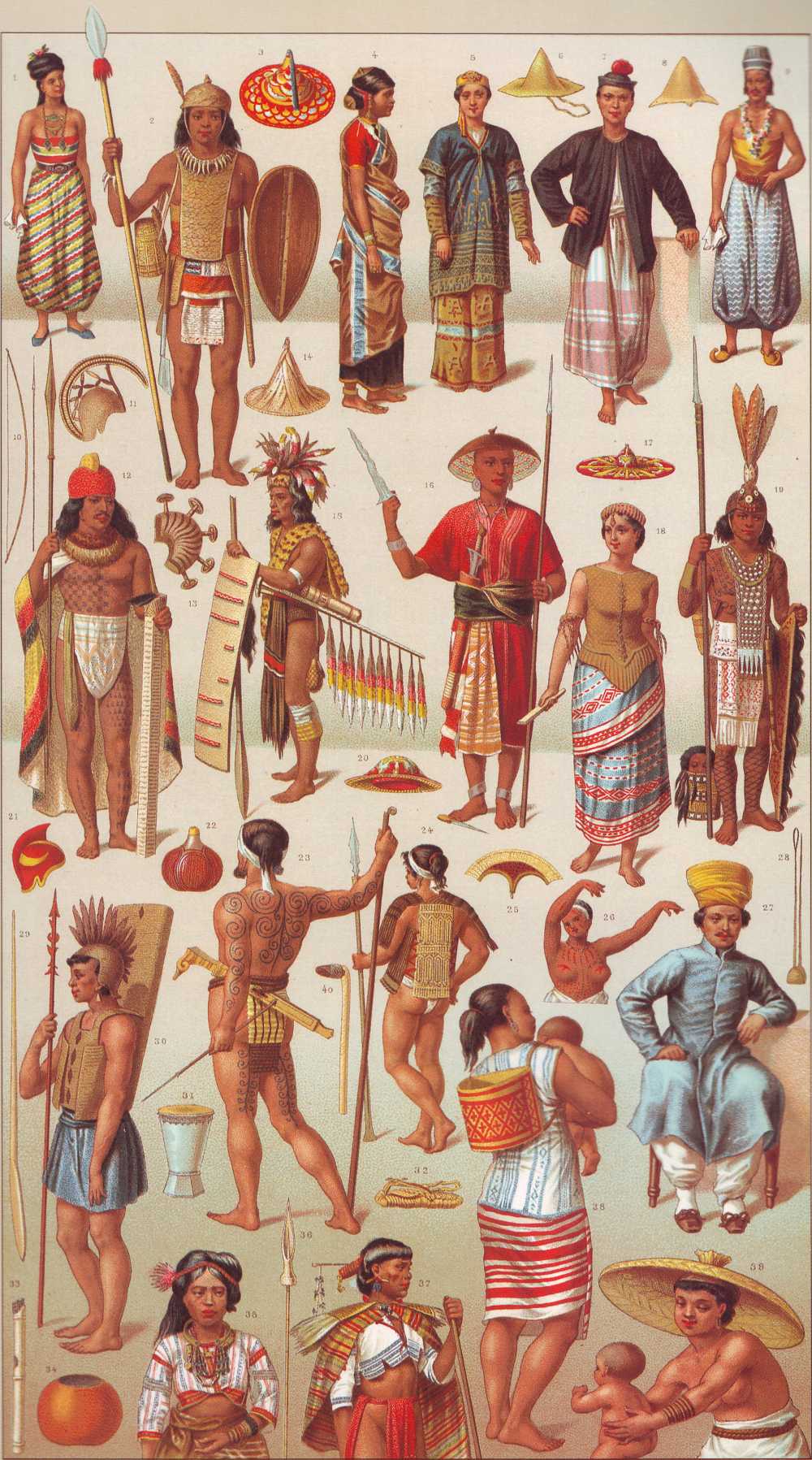
Try Amazon Audible Premium Plus and Get Up to Two Free Audiobooks
THE HISTORICAL ENCYCLOPEDIA OF COSTUME
ALBERT RACINET
THE CLASSIC WORK OF THE 19TH CENTURYp46-47

AMONGST THE TRIBES OF OCEANIA it was often the custom for mothers to flatten their childrens' noses artificially, and to encourage the use of varnish to darken their teeth. Tribesmen would make themselves more attractive - and more frightening to their enemies - by covering their bodies with tattoos.
1 & 9 A Javanese woman and man. The woman wears a light turban and long and full trousers that are gathered in around the waist by a narrow thong. Two chains hang from a gold collar studded with gems.
The man (9) is similarly dressed, but with a cut-off conical bonnet and a garland of flowers.
2 & 19 Natives of Borneo in battle dress. The upper body (2) is protected by a breast-plate of fish skin. The loin cloth under the breastplate ends in a small apron at the front. The helmet, like a thick forage cap, is of woven cane. The war jewellery consists of a collar and bracelets made from tiger claws.
The second native (19) shows several variations in dress. The front of his helmet represents a human face, while its top is made of the skull of a rhinoceros bird decorated with argus feathers. His sword hilt is decorated with the hair of those he has defeated and on the ground is a basket, used to carry severed heads.
5 & 7 Karens from Borneo. The man's clothing is for everyday wear and the woman is in full ceremonial dress.
12 A warrior of the king's guard from the Islands of Hawaii.
15 A Binua, from Singapore, wearing full battle dress. The lance is entirely wooden and the blowpipe, the national weapon, is much shorter and more inaccurate than later versions, such as those tipped with iron points (19 & 24). The Binua's clothing and jewellery are made entirely from natural materials: a leopard skin hangs over one shoulder, and his hat is crowned with feathers.
16 A Malay from Borneo. He has a Muslim's shaven head, and a hat in the shape of an inverted basin that serves as a parasol. Malays usually carry two daggers: one at the front and one slung over the shoulder.
18 A woman from the Timor Islands. Her upper body is covered in a tissue of silk, threaded with gold and she wears a silk cap and a dyed cotton skirt that is Javanese in style. Unless in the presence of strangers, a skirt would be her only garment.

23 & 24 Dayas in hunting and battle dress. The bun hairstyle (23) shows Polynesian influence and the breastplate (24) is made of vegetable fibres.
25 A child's fly swatter.
30 A Philippino Indian fisherman. This armour looks like chain mail, but is, in fact, made of vegetable fibres.
38 & 39 Daya women. The sleeveless jacket (38) is made entirely of cotton. The small wooden box attached by cords serves both as a pocket and as a bag. The second woman (39) wears only a loincloth, which goes down to the knee. Her hat is made of woven straw and her bracelet of brass wire.